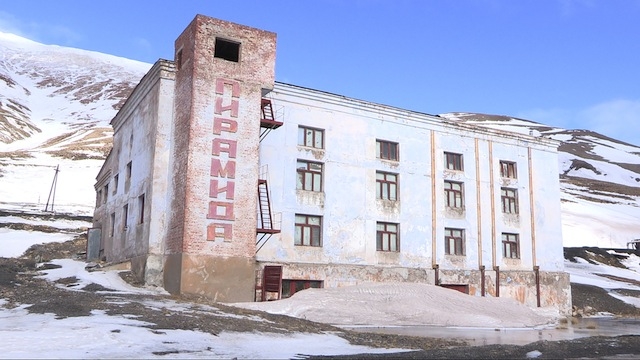If they have any regard for their personal freedom, Turkish artists, journalists and academics cannot be as overtly critical as others; Ali Kazma has made this restriction an advantage, developing a modest yet mighty filmic practice characterised by impassive observation. When he exhibited in the Turkish Pavilion at the Venice Biennale in 2013, Kazma showed several works from his Resistance series (2012–), and two of these, Tattoo and Calligraphy, are among the small-format projections in the first gallery here. They are placed alongside works including Kazma’s best-known work, Clerk, of 2011, an observation of the hands and mien of a man with extraordinarily speedy, accurate – and surely outmoded – document-stamping skills. Kazma’s close camera is respectful, intimate even, and the portrait unspectacular but unsettling: though the framing and skill suggest we might be impressed, the subject of analogue bureaucracy is depressing.
This exhibition of more than 20 filmworks continues in the next space with Safe (2015) and North (2017): a three-minute single projection and a five-minute double projection respectively of snowy Norwegian landscapes and architectural structures found there. Safe is set on the Svalbard Islands, where thousands of seeds are preserved inside the Global Seed Vault, while North records an abandoned Soviet mine and its accommodation and community buildings on Spitsbergen Island. While North records erstwhile habitation and the relics of a past working-culture, people are absent from both works. Kazma’s commentary lies in his selection and his framing, the subjects he finds worthy of quiet focus: a store to preserve plant species in a site of melting permafrost; the architecture of a community outliving its inhabitants. He illuminates subjects worthy of attention, among them the overlooked and the little-known. Taxidermist (2010) reveals the craft of gutting and skinning an animal cadaver, fixing the skin on a synthetic foam form and primping it to make it appear lifelike again. It’s not pretty: we are rapidly sensitised to the process while likely desensitised by exposure to it.
House of Letters (2015) concludes the first suite of galleries on a cosy, pastoral note, observing Alberto Manguel at home in rural France among countless books, the camera looking in through the window or poring over manuscript pages and personal inscriptions from authors to the Argentine-Canadian writer as a sunny day turns to night. If it feels a bit too enchanting, it turns out that Manguel – with whom Kazma had collaborated for several years on the publication Recto Verso (2012) – left his idyll soon after to become director of the Argentine National Library. In contrast, there is plenty of horror in the final sections of the exhibition, sometimes evident, sometimes an unseen presence in buildings that have witnessed brutality. The earliest work, Brain Surgeon (2006), shows surgeons undertaking – and their patient undergoing – what looks like trepanning; it is almost impossible to watch. Mine (2017), however, consists of still-camera observation of the skeletons of buildings in the Atacama Desert: once a mine, the exhibition notes state, this site became a concentration camp during the Pinochet regime.
Yet Kazma films most often without human subjects; when people are present there is no engagement or exchange with them. His pointed focus examines a world as it has been formed by humanity, but we are not present. Sometimes the world – weather or nature – takes back control, when buildings rust or are subsumed by snow. Still, in shaping our environments as we and our ancestors willed, have we created Frankenstein’s monsters? In the last film, Tea Time (2017), Kazma watches machines producing glassware as closely as he did the clerk six years earlier, but this subject is a powerful machine working with glowing, molten raw material at speeds sometimes perceptible, sometimes too fast to fathom. Kazma’s attitude is ambivalent, though he does convince us we need to pay attention.
Jeu de Paume, Paris, 17 October – 21 January
From the January & February 2018 issue of ArtReview
